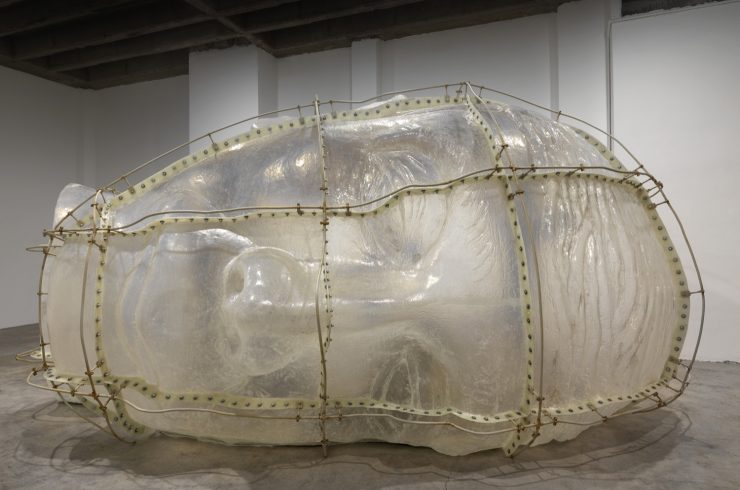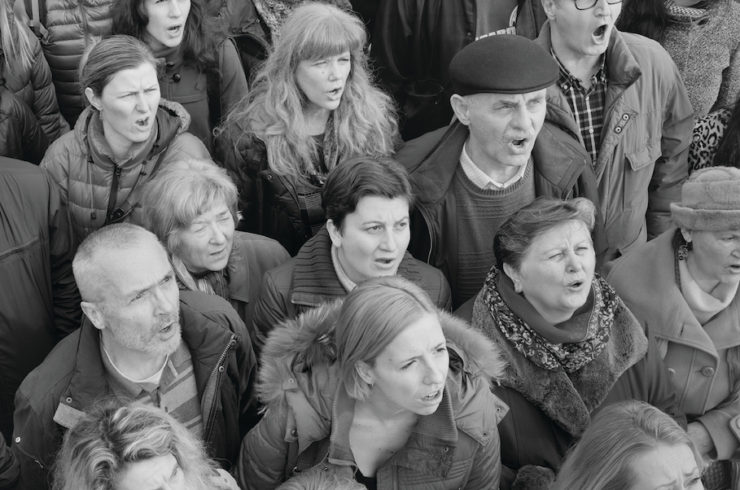Art, Featured
Fantasy Thrillers, Drugs, ’60s Fantasy Furniture and Dora Budor
Dora Budor has been making headlines in the art world, with her recent solo exhibition at the prestigious Swiss Institute in New York along with numerous group shows including her most recent participation at the Whitney Museum’s new exhibition “Dreamlands: Immersive Cinema and Art, 1905 – 2016” on view until February 5, 2017. The young Croatian artist often works with acquired props from movie sets that she appropriates and constructs. Lately, she’s been on the verge of other new ideas, but still sticking to her roots of investigating the film world.
The title of Dora Budor’s single piece in her last solo exhibition “Ephemerol” at Ramiken Crucible Gallery is from David Cronenberg’s 1981 movie Scanners, “We see you so often these days. How nice is it to find a patient who regards his status seriously. What status? His status as a patient. People tend to forget they are patients. Once they leave the doctor’s office or the hospital, they simply put it out of their minds. But you are all permanent patients, like it or not. I am the Doctor, you are the Patient. Doctor doesn’t cease being a doctor at the close of day. Neither should patient” (2016). The title of the piece puts us directly in the scene of the movie where Budor’s ideas for the exhibition originated. The exhibition contains a monumental sculpture of a giant head, modeled after the art direction from Carol Spier’s initial design for Scanners.

We see you so often these days. How nice is it to find a patient who regards his status seriously. What status? His status as a patient. People tend to forget they are patients. Once they leave the doctor’s office or the hospital, they simply put it out of their minds. But you are all permanent patients, like it or not. I am the Doctor, you are the Patient. Doctor doesn’t cease being a doctor at close of day. Neither should patient. epoxy resin (containing Bisphenol A), fiberglass, powder coated steel and aluminum, FX rust, plywood, enamel, plexiglas, expandable soft foam, polymer paint, metal hardware 182 x 83 x 90 inches 2016
Budor is known for creating works inspired by cinema or re-appropriating set props that she acquires from movies. Her sculptures often used interesting materials and special effects to make her sculptures purposely look old, damaged or rusty – mirroring the process used in the film industry with special effects. Unlike most of her previous work, her piece in “Ephemerol” is a new direction for the artist. Instead of using movie props and re-contextualizing them, Budor created an entirely new sculpture that combined multiple ideas, not directly related to film.
In the film Scanners, a telepathic artist named Benjamin Pierce works in isolation to construct a giant head that acts as a shelter for a seating area, which is later destroyed in a shootout. Budor created a sculpture that acts as a fiberglass mold for the reproduction of Pierce’s head, but Budor changed the interior seating area of the head to replicate the work, “Visiona 2” and the iconic ‘60s furniture piece, “Living Tower” by the influential Danish designer Verner Panton.
Panton’s designed these specific, futuristic furniture rooms during the Cologne Furniture Fair. From the end of the Sixties to the mid-Seventies the chemical company Bayer rented a pleasure boat during the fair and had it transformed each year into a temporary showroom by a well-known contemporary designer. The main goal for Bayer was to promote various synthetics products in connection with home furnishings. Verner Panton was commissioned twice to show his fantasy concept art, “Visiona” (1968) and “Visiona 2” (1970).
Budor used Panton’s designs to change the seating area inside the giant head from Scanners. Budor connects Panton’s designs because they were commissioned by the chemical producer, Bayer – the company that is also the largest producer of Bisphenol A (BPA) a chemical found in epoxy resin, essential to constructing Budor’s sculpture.
Ephemerol, the name of the exhibition, derives from the name of a fictional drug in the film, which was given to pregnant women as a sedative with unintentionally side affects that make their children telepathic. The drug, Ephemerol is based on the actual history of Thalidomide, a real drug that was also used as a sedative and hypnotic in 1957. It was first introduced in Germany, but was later promoted around the world because it helped treat nausea in pregnant women. The drug was eventually banned because it caused thousands of birth defects.
The theme of paranoia surrounding pharmaceutical drugs in the film Scanners mimics our previous history with Thalidomide and controversial chemicals in use today like Bisphenol A (BPA). The chemical BPA is an organic synthetic compound used to make certain plastics and epoxy resins. BPA-based plastic is used in a variety of common consumer goods, but the problem with BPA is that is contains hormone-like properties that can potentially harm us, so the chemical has been banned in some countries. The largest producer of the chemical is the Bayer group, the same company that commissioned Verner Panton to design a fantasy landscape. The chemical has become so widely used in consumer plastics and is essential to the hardening of the epoxy used in Budor’s sculpture.
Budor reappropriates the head from Scanners, but she doesn’t make a direct replica. Instead she creates a translucent mold of the sculpture, which signifies that the head can be reproduced. The pieces of the mold are stitched and bound together with a metal reinforcement. The piece is constructed in an industrial, but also medical way. The head seems held together as if in a cast, recovering. The dialogue between the doctor and patient in the title of the piece is reflected in the relationship between Budor and Scanners, the fictional drug Ephemerol and BPA, Verner Panton and Bayer, Pychedlic fantasy rooms and Budor’s colorless, dead version of a seating area (which was off limits to visitors). The patient will always be a patient, one that can never recover and constantly relies on the doctor to exist. Budor’s work is full of complimenting paradoxes and pairings. Budor again uses the fantasy element of film as a starting point and a tool for analyzing truths in our reality, while using her process of creation to highlight the superficiality in cinema and the pharmaceutical industry.
Written by: Kelly Foster










